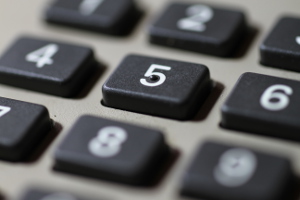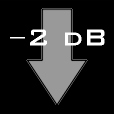
The DTMF encoding system has become very common in telephones where it has replaced the old pulse dialer. But even on the air the DTMF encoding is widely used, for example, for the tone squelch.

DTMF means Dual Tone Modulation Frequency. This systems is intended to transmit keys pressed on a keyboard through an audio channel such as a telephone line or a radio connection. Every time a key is pressed two audio frequencies are transmitted: one corresponds to the column in which the key is in, and the other one corresponds to the row. This encoding handles a maximum of 4 rows by 4 columns, that means 16 keys (from 0 to 9, *, #, and from A to D). The frequency corresponding to the row is emitted with less amplitude than the higher one, and precisely of 2 dB (that means that the amplitude is 1.259 times smaller).
 |
 |
 |
 |
 |
This table shows graphically the layout of the keys on the DTMF keyboard with the corresponding frequencies and the minimum and maximum values for each tone. Wave files containing the corresponding tones for each key can also be directly downloaded.
Please read my disclaimer.
| [1] | A. Sbrana. Decoder DTMF. Progetto-Elektor, N.10, Ottobre 1988, pp. 64-67. |
| Home | Electronics | Index | Page hits: 041684 | Created: 10.1999 | Last update: 10.2013 |